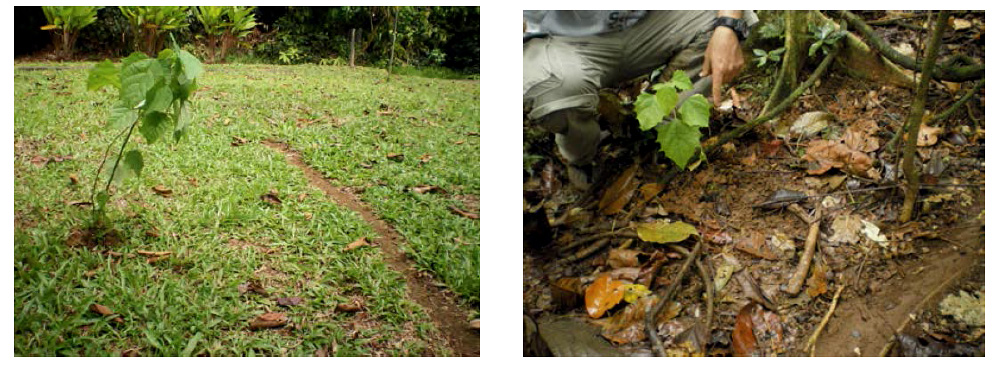
Ecological Archives E096-052-A3
Alejandro Gustavo Farji-Brener, Federico Chinchilla, María Natalia Umaña, María Elena Ocasio-Torres, Alexander Chauta-Mellizo, Diana Acosta-Rojas, Sofía Marinaro, Mónica de Torres Curth, and Sabrina Amador-Vargas. 2015. Branching angles reflect a trade-off between reducing trail maintenance costs or travel distances in leaf-cutting ants. Ecology 96:510–517. http://dx.doi.org/10.1890/14-0220.1
Appendix C. Description of the experimental approach.
To experimentally test whether ants build trail branches with different bifurcation angles depending on the location of ant nests (open areas vs. forests) we performed a field experiment. In a randomly selected Atta cephalotes nests (5 in open areas and 5 in forests), we planted seedlings of Gmelina arborea (~30 cm height) 3–5 m away from the nest and 1–3 m away from the most active foraging trail (one seedling per trail). G. arborea is a common exotic, commercial tree highly palatable to A. cephalotes. Our aim was to monitor the building process of the trail branch that should connect the planted seedling with the nearest established trail. We monitored each sampled nests several times a day during 10 days. We were unable to document the branch building process because: (a) some seedlings (2 in open areas and 2 in forest) were completely defoliated between sampling periods without visible signs of branch building; and (b) the remaining seedlings were never discovered by the leafcutters during the sampling period.
Seedlings of Gmelina arborea planted near a foraging trail of the leaf-cutting ant Atta cephalotes in an open area (left) and forest (right). All photos by A. G. Farji-Brener.